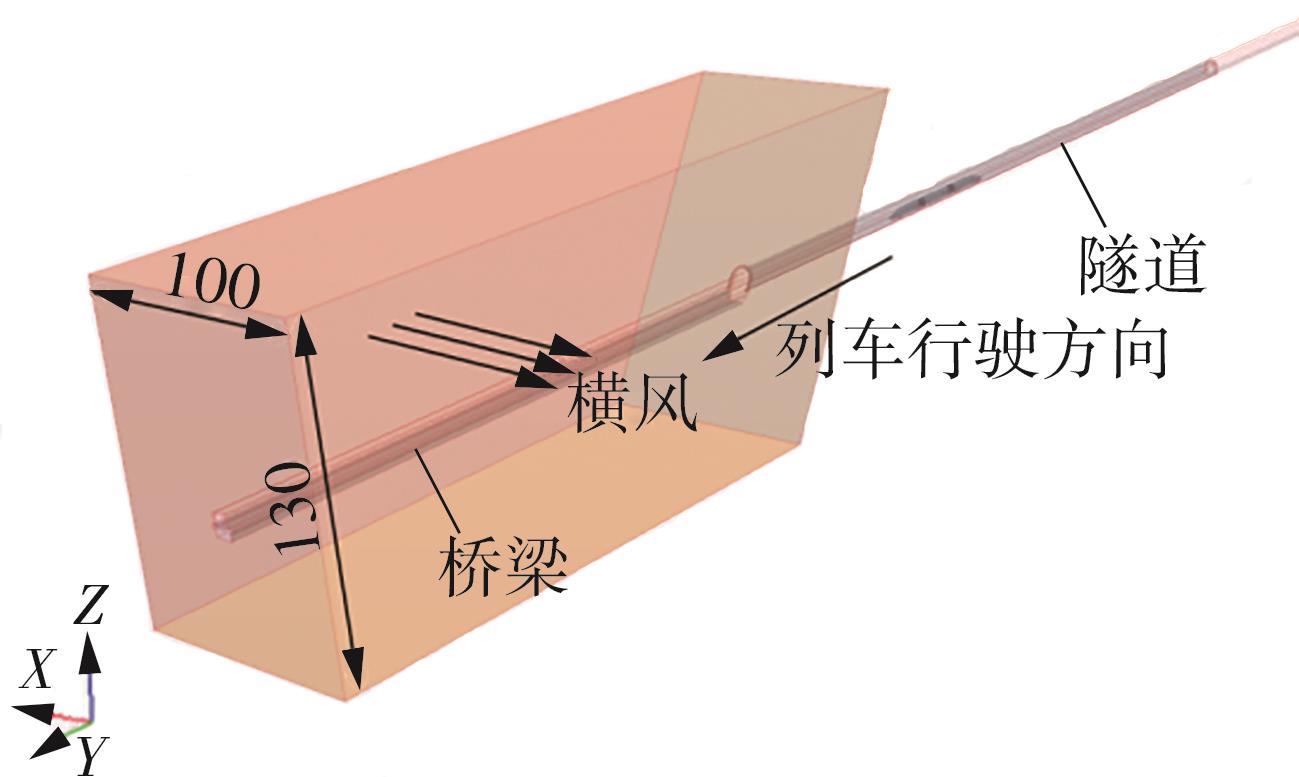| 1 |
严冠章,李志伟,曾广志,等 .复杂峡谷地形条件下的桥上动车组横风气动特性研究[J].五邑大学学报(自然科学版),2021,35(2):31-37.
|
|
YAN Guanzhang, LI Zhiwei, ZENG Guangzhi,et al .Research on crosswind aerodynamic performances of EMUs on bridge in complex canyon terrain [J].Journal of Wuyi University (Natural Science Edition),2021,35(2):31-37.
|
| 2 |
骆建军 .高海拔地区高速铁路隧道空气动力学特性[J].西南交通大学学报,2016,51(4):607-614.
|
|
LUO Jianjun .Aerodynamic characteristics of high-speed railway tunnel in high altitude area [J].Journal of Southwest Jiaotong University,2016,51(4):607-614.
|
| 3 |
SUZUKI M, TANEMOTO K, MAEDA T .Aerodynamic characteristics of train/vehicles under cross winds [J].Journal of Wind Engineering and Industrial Aerodynamics,2003,91(1-2):209-218.
|
| 4 |
郗艳红,毛军,高亮,等 .横风作用下高速列车安全运行速度限值的研究[J].铁道学报.2012,34(6):8-14.
|
|
XI Yanhong, MAO Jun, GAO Liang,et al .Research on safe operating speed limit of high-speed train under cross wind [J].Journal of the China Railway Society,2012,34(6):8-14.
|
| 5 |
郗艳红,毛军,柳润东,等 .高速列车明线会车压力波波幅研究[J].华南理工大学学报(自然科学版),2016,44(3):118-127.
|
|
XI Yan-hong, MAO Jun, LIU Run-dong,et al .Study on pressure wave amplitude of high-speed train passing on open Line [J].Journal of South China University of Technology (Natural Science Edition),2016,44(3):118-127.
|
| 6 |
杨明智,袁先旭,鲁寨军,等 .强侧风下青藏线列车气动性能风洞试验研究[J].实验流体力学,2008,22(1):76-79.
|
|
YANG Mingzhi, YUAN Xianxu, LU Zhaijun,et al .Wind tunnel test on aerodynamic performance of qingzang line train under strong crosswind [J].Experimental Fluid Mechanics,2008,22(1):76-79.
|
| 7 |
BAKER C J .Train aerodynamic forces from moving model experiments [J].Journal of Wind Engineering and Industrial Aerodynamics,1986,24(3):227-252.
|
| 8 |
SUZUKI.Aerodynamic characteristics of train/vehicles under cross winds [J].Journal of Wind Engineering and Industrial Aerodynamics,2003(91):209-218.
|
| 9 |
牛纪强,梁习锋,周丹,等 .高速列车非定常气动力及其波动特性的雷诺数效应[J].华南理工大学学报(自然科学版),2016,44(8):82-90.
|
|
NIU Ji-qiang, LIANG Xi-feng, ZHOU Dan,et al .Reynolds number effect of unsteady aerodynamic force and its fluctuation characteristics of high-speed train [J].Journal of South China University of Technology (Natural Science Edition),2016,44(8):82-90.
|
| 10 |
田海良,吴颂平 .横风作用下列车在高架桥上运行的气动特性分析[J].科学技术与工程,2012,12(1):81-84.
|
|
TIAN Hailiang, WU Songping .Aerodynamic characteristics analysis of train running on viaduct under cross wind [J].Science Technology and Engineering,2012,12(1):81-84.
|
| 11 |
邓锷,杨伟超,张平平 .横风下高速列车突入隧道时气动荷载冲击效应[J].华南理工大学学报(自然科学版),2019,47(10):130-138.
|
|
DENG E, YANG Weichao, ZHANG Pingping .Impact effect of aerodynamic load on high-speed train entering tunnel under transverse wind [J].Journal of South China University of Technology (Natural Science Edition),2019,47(10):130-138.
|
| 12 |
王磊,骆建军,李飞龙 .高速列车过双线隧道气动效应及列车风特性[J].哈尔滨工业大学学报. 2021,53(9):43-52.
|
|
WANG Lei, LUO Jianjun, LI Feilong .Aerodynamic effect and wind characteristics of high-speed train passing double-track tunnel [J].Journal of Harbin Institute of Technology,2021,53(9):43-52.
|
| 13 |
王磊,骆建军,李飞龙,等 .高速铁路双线隧道内列车风分布及流场特性[J].中南大学学报(自然科学版),2021,52(4):1346-1357.
|
|
WANG Lei, LUO Jianjun, LI Feilong,et al .Wind distribution and flow field characteristics of trains in high-speed railway double-track tunnel [J].Journal of Central South University (Science and Technology).2021,52(4):1346-1357.
|
| 14 |
王磊,骆建军,李飞龙 .横风下高速列车突入隧道瞬变压力及列车风[J].振动与冲击,2022,41(3):27-36.
|
|
WANG Lei, LUO Jianjun, LI Feilong .Transient pressure and train wind of high-speed train entering tunnel under cross wind [J].Journal of Vibration and Shock,2022,41(3):27-36.
|
| 15 |
柳润东,毛军,赵萌,等 .风障表面的高速列车风致空气脉动压力研究[J].华南理工大学学报(自然科学版),2016,44(10):87-95.
|
|
LIU Run-dong, MAO Jun, ZHAO Meng,et al .Wind induced air pulsation pressure on wind barrier surface of high-speed train [J].Journal of South China University of Technology (Natural Science Edition),2016,44(10):87-95.
|
| 16 |
骆建军 .隧道入口侧风条件下高速铁路隧道内流场特性[J].西南交通大学学报.2017,52(4):746-754.
|
|
LUO Jianjun .Flow field characteristics in high-speed railway tunnel under crosswind condition at tunnel entrance [J].Journal of Southwest Jiaotong University,2017,52(4):746-754.
|
| 17 |
苗秀娟,张雷,李志伟,等 .强横风下列车出隧道时的瞬态气动性能[J].中南大学学报(自然科学版),2014,45(3):958-964.
|
|
MIAO Xiujuan, ZHANG Lei, LI Zhiwei,et al .Transient aerodynamic performance of train exiting tunnel under strong cross wind [J].Journal of Central South University (Science and Technology),2014,45(3):958-964.
|
| 18 |
高广军,苗秀娟 .强横风下青藏线客车在不同高度桥梁上的气动性能分析[J].中南大学学报(自然科学版),2010,41(1):376-380.
|
|
GAO Guangjun, MIAO Xiujuan .Transient aerodynamic performance of train exiting tunnel under strong cross wind [J].Journal of Central South University (Science and Technology),2010,41(1):376-380.
|
| 19 |
赵勇,唐国荣 .关于客运专线隧道设计与施工的几点意见[J].铁道标准设计,2005,49(6):1-8.
|
|
ZHAO Yong, TANG Guorong .Some opinions on tunnel design and construction of passenger dedicated line [J].Railway Standard Design,2005,49(6):1-8.
|
| 20 |
邓运清 .客运专线简支箱梁综述[J].铁道工程学报,2005,22(1):65-71.
|
|
DENG Yunqing .Review of simple supported box girders for passenger dedicated line [J].Journal of Railway Engineering,2005,22(1):65-71.
|



































